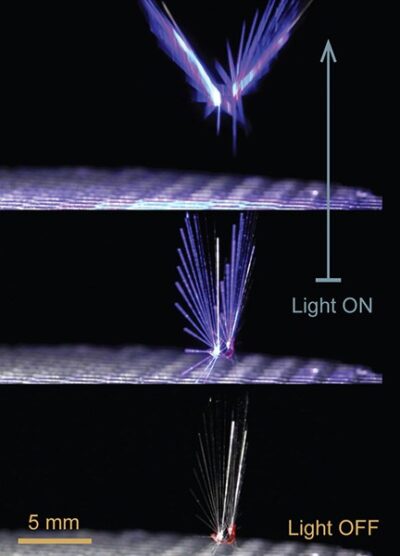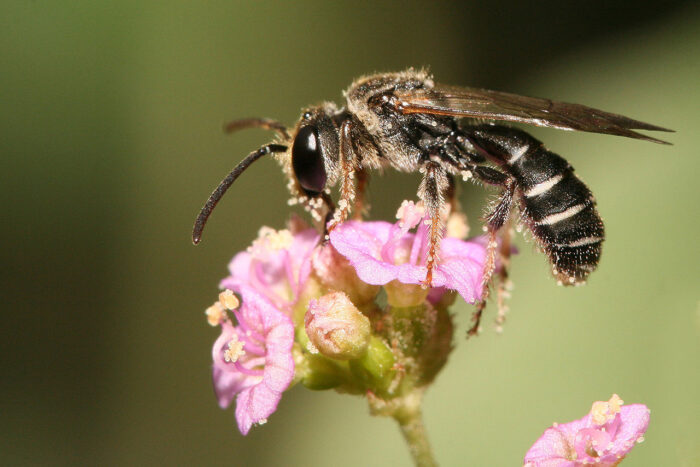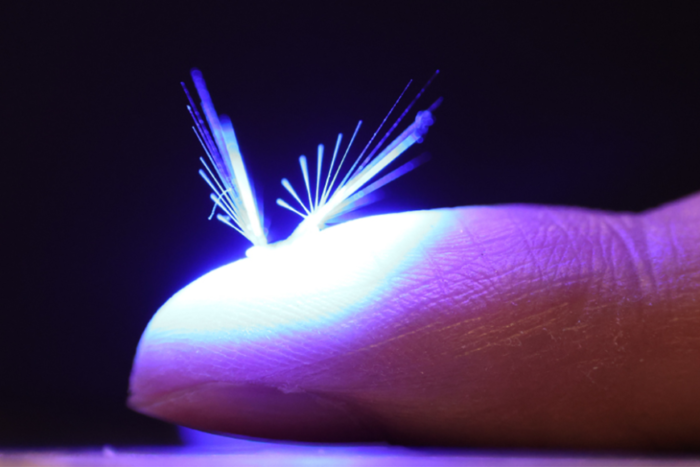The dandelion seed is one of nature's simplest tricks.
These little puffy miracles can carry the seeds of a single dandelion for potentially miles in all directions. Their secret isn't all that complicated either. Thanks to a delicate umbrella structure called a pappus, the seed is lifted into the air on the wind. It then rides that breeze for as long as it will carry it, before settling down and, hopefully, taking root in fresh soil.
Of course, not every one of those seeds will be successful. But the amount of seeds each flower makes, paired with the large and random area the seeds 'fly' to, is very effective. It's certainly a lot better than if the seeds just fell off the plant to the ground.
Now a new piece of technology made at Tampere University in Finland is using the dandelion as inspiration. Called FAIRY (Flying Aero-robots based on lIght Responsive materials assemblY), these tiny robots fly on the wind, just like dandelion seeds!
Responds to laser light

Stuff (Jianfeng Yang/Tampere University)
The FAIRY robot weighs only 1.2 milligrams, which is less than a grain of sand. It is designed with two tiny feathery 'wings' whose fibres are 14 microns thick—than is about 3 times thinner than a human hair. This makes the FAIRY quite a frail piece of tech! But it also means that this incredibly light and delicate machine is perfectly designed to ride the wind.
The two wings are connected at the base by an actuator—a device that makes things move. When a light source is shone on the robot, the actuator opens the wings. Once opened, FAIRY is in a perfect position to be carried upward in a breeze. And when the light disappears, the wings are closed, allowing the robot to fall back down to the ground.
Though these robots could not be steered in mid-air like a drone, the idea is that by using lasers to stimulate their wings, the FAIRYs could still be sent in specific directions.
Pollen, not seeds

Bees are very important pollinators, but their numbers are dropping around the world. (Wikimedia Commons)
Unlike the dandelion seeds it is based on, the FAIRY would not carry seeds. Instead, it would carry pollen.
According to Hao Zeng, a micro roboticist at Tampere University behind the project, the goal is to create a simple alternative to pollinators, such as bees, that are disappearing from some habitats.
"This would have a huge impact on agriculture globally," he says, "since the loss of pollinators due to global warming has become a serious threat to biodiversity and food production."
Of course, Zeng isn't hoping to replace bees. But trying to give them a helping hand is a great idea. Could many thousands of these FAIRYs help keep our forests alive and thriving?
Along with a new bee vaccine, this innovation could become one of many surprising ways that science and technology ends up helping to positively shape our future.
 Meet the most adorable robot you've ever seen. The FAIRY! (Jianfeng Yang/Tampere University)
Meet the most adorable robot you've ever seen. The FAIRY! (Jianfeng Yang/Tampere University)










This innovation is very interesting, and I’m encouraged by the statement assuring the reader that the FAIRY is not expected to replace bees. We all know that corporations do not have a conscience, and would jump at the chance to be free to pollute the Earth as much as they want, if there were no bees to harm! Unfortunately, the photo included in the article is not a bee (honey bee or bumblebee) – it’s a wasp, a completely different species of flying insect, that is nowhere near as good at pollinating! Wasps are also great at killing honey bees!
My apologies on the error I made in identifying your photo as a wasp. I’ve since learned that it could be a leaf-cutter bee. They are good pollinators!